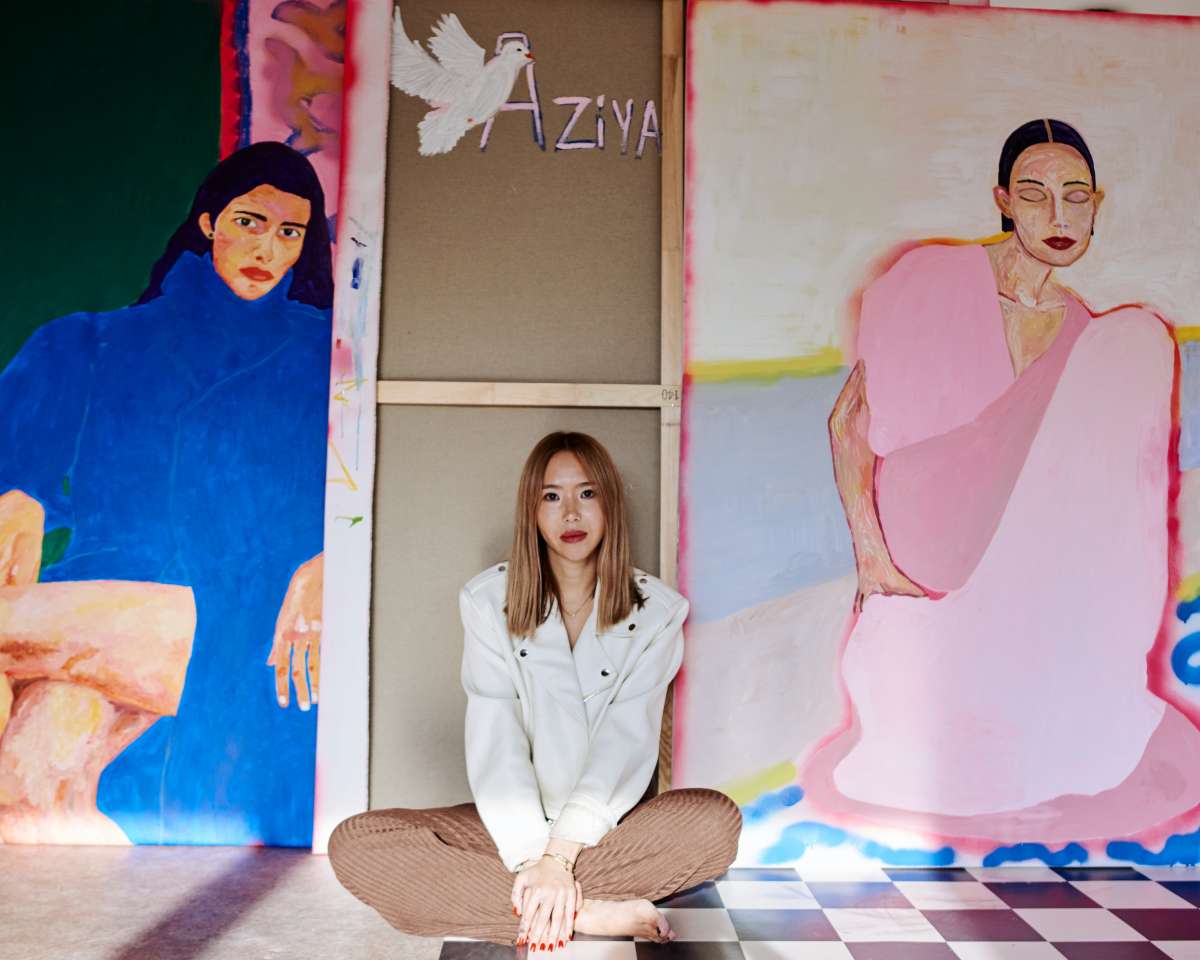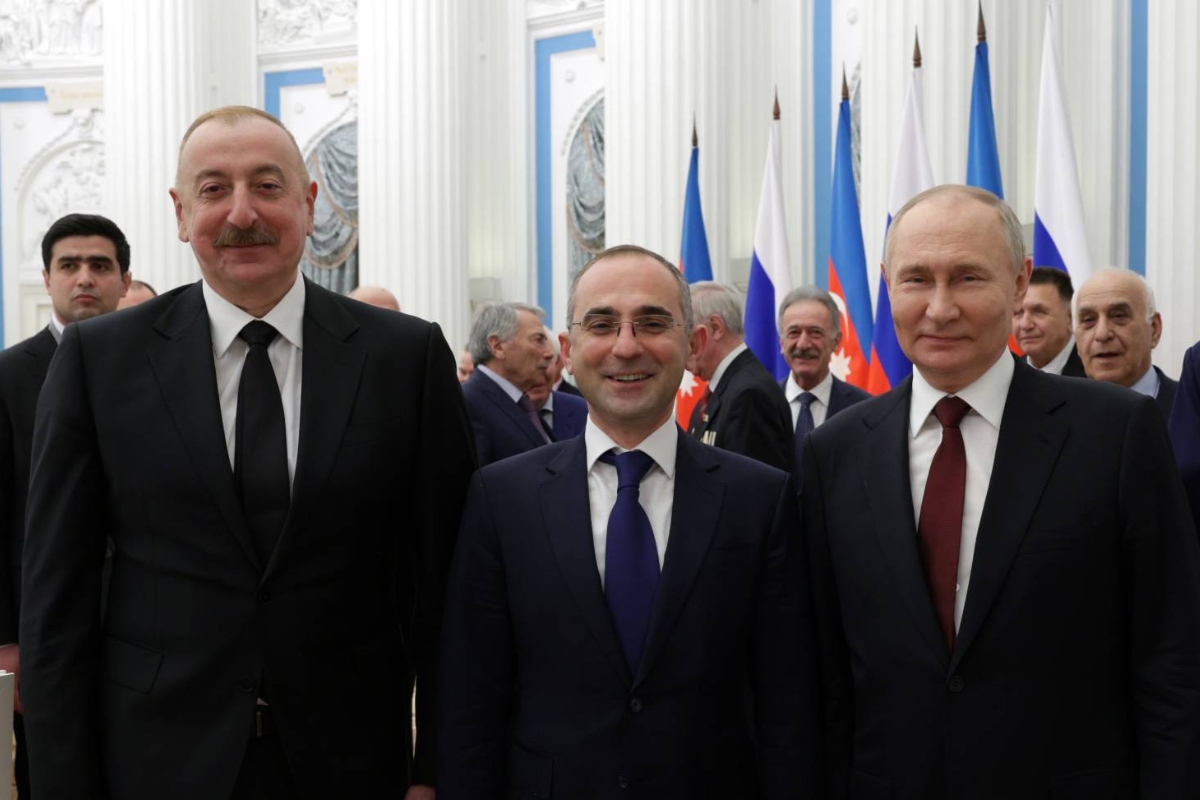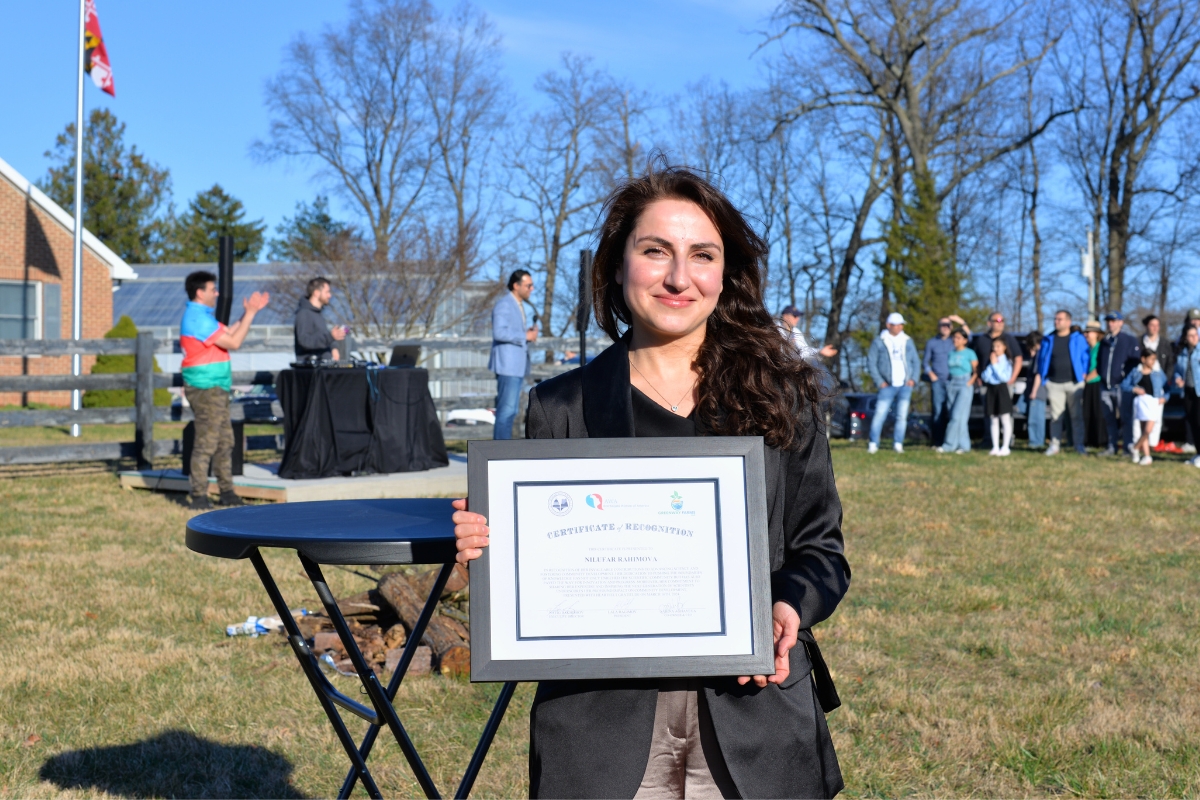- Home
- “In my life, nothing has worked out as easily as painting artworks and selling them”—Story of Aziya, a Kyrgyz-Kazakh Artist in Prague
6 November 2023
“In my life, nothing has worked out as easily as painting artworks and selling them”—Story of Aziya, a Kyrgyz-Kazakh Artist in Prague
Her works are full of life and colours. Her characters—as she calls the people depicted in her artworks—are full of stories hidden in their faces. The eclectic style of her works, which is so beloved by contemporary art connoisseurs and admirers, makes you study each painting with peculiar attention to detail. Her name is Aziya, a Kyrgyz-Kazakh artist living in Prague, Czech Republic. Although coming from a family of artists, it was only three years ago when Aziya allowed herself to dive deep into the world of art by becoming a full-time artist. Now, her works are being sold for thousands of dollars, and her exhibitions are being held in the greatest art capitals of the world.

Image: courtesy photo
Aziya was born in Almaty to a Kyrgyz sculpturist, Murat Umetov, and a Kazakh actor, Laura Ikhtymbaeva. Both her parents come from creative families. Aziya’s paternal grandfather, Zhumabai Umetov, was a famous Kyrgyz artist. Her maternal grandfather, Nurzhuman Ikhtymbaev, is a well-known actor in Kazakhstan. Aziya acknowledges that it’s the strong genes of her family that are behind her success as an artist. “I just got lucky,” she adds.
Growing up, Aziya would spend her time between Almaty and Bishkek. At the Bishkek studio of her grandfather Zhumabai, Aziya would paint alongside him. In Almaty, she spent her time either behind the scenes of the theatre or at home watching her grandfather Nurzhuman rehearsing lines from his scripts. “I spent a lot of time with my grandfathers because my grandmothers worked a lot. A creative profession means that you are always alone with yourself and with your soul. This had a strong influence on me—seeing how one grandfather was rehearsing the script, and the other was writing in the studio, and I was with them,” Aziya remembers.
Although her grandmothers were not artists, she honours the sacrifices they had to make. “Creative people need to be supported,” she says. Her grandmother, Sholpan Ikhtymbaeva, at some point, worked three jobs to be able to support her actor husband while raising three children at the same time. Her other grandmother, Gulbara Umetova, used to be the Deputy Minister of Industry in Kyrgyzstan. “She still carries the memory of my grandfather. She is completely involved in his foundation. They made an international award named after him in Kyrgyzstan,” Aziya mentions.
If her grandfathers get the credit for her artistic upbringing, it is her grandmothers and her mother who became her role models as strong and independent women. “I saw feminism in my family. I saw an example of power couples in my family,” the artist proudly says. Her love for women is seen through her work, as in almost every painting, it is women that we find. “This is the power of the family, I feel it,” Aziya explains, adding that knowing and honoring the history of her family is crucial to her, and that is what gives strength to her work.
Yet it took Aziya trying herself out in many other fields to find out that she was meant to be an artist. “I tried everything possible regarding my career. I was looking outside all the time. It was as if I was moving away from the real me.” Originally moving to Prague in 2006, Aziya did her undergrad studies in the Visual Arts at the University of New York in Prague (UNYP) on a scholarship. After she graduated, she moved back to Almaty and worked as a marketing manager at the Essentai Mall. However, after two years back home, Aziya realized she wanted to continue her studies. Although she had been accepted to two Master’s programs at New School in NYC and Queen’s College in London, the artist decided to move back to Prague. “Something inside told me to come back here. I thought pragmatically. When you are from a third country, you need to think this way. I have a good visa history [in Prague]. Unlike London, there are better opportunities here; there are good taxes, good real estate,” she explains. After getting her postgrad degree in Business Communications at UNYP, Aziya tried herself in IT, project management, market research, and real estate. From 2018 to 2020, Aziya had her own business, which helped her create a financial cushion necessary for any artist. “To be an artist without money? I don’t know such people. All artists work in parallel, as a waiter or someone else. The materials are very expensive. Allowing yourself to be an artist is a great luxury,” she says.
“After the collapse of the USSR, my parents started doing business, which is probably why I didn’t choose the creative path at first. They told me to be careful because this path is difficult. In fact, it was more difficult for me when I wasn’t creative,” she explains. No matter what her job was, Aziya never stopped painting, drawing, and creating art. Although successful, she was dissatisfied with her life. If it wasn’t for the beginning of the pandemic in 2020 and the global lockdown, Aziya might have never decided to follow her creative path. “COVID started, and I went to Kazakhstan and got stuck there. I started painting a lot, got sucked in.” When she finally returned to Prague that year, she got a business proposal that accidentally started her artistic career. Her friends invited her to be a business partner at the wine bar and suggested doing her exhibition there. “In my life, nothing has worked out as easily as painting artworks and selling them. I haven’t exhibited in cafes since that time; it was an exception,” she says, explaining that she didn’t even think that anyone would buy her work at that time, let alone that her works would be shown at the art galleries in the future. Yet that was when she sold her first painting for $2000. That first sale helped her start renting her first studio. After that, things were set in motion—her paintings started selling, and soon, there were exhibitions in London and Berlin.
Aziya explains that her works are a result of visions she gets and that, as an artist, she is a guide between “the invisible” and “the visible” worlds. “You constantly draw ideas from there, one might say, you take a lot of information from that world,” she explains. “Paintings began to come to me when I started doing this seriously three years ago. You close your eyes, and the artworks are in your head. It's from the inside.” Sometimes, it is life itself that inspires her paintings. “I was recently in Italy, and there were women sitting and talking passionately while they sorted out bouquets for some event. They were such beautiful women. There was a moment of silence, and I caught it,” as a child surrounded by actors in her family, she compares these moments of silence to pauses in acting. “I pay attention to pauses in life, and in that moment, a painting is born in my head. Then I come home and start thinking and describing the characters. It is a whole novel!” she smiles.
Besides her creative and spiritual approaches to her art, Aziya is no stranger to hard work and productivity. It takes her about a week to finish one painting, and sometimes, she works on a few works at the same time. In order to avoid burnout, she promotes total sobriety and wellness. “My grandfather Zhumabay said, ‘An artist's success is 90% work and 10% talent’. For me, it is a personal feeling. I have come to the conclusion that success is a combination of self-realization and satisfaction,” Aziya explains.
“My main goal is to spread love and goodness. This is my activism—through my art to bring healing, and remind women who they are,” Aziya says in the end, highlighting that her works are an ode to women. “This is a reminder that we have sensuality, vulnerability, tenderness, kindness, and love. We are fragile, but at the same time, strong. I want to bring this support and solidarity of women into the world.”






